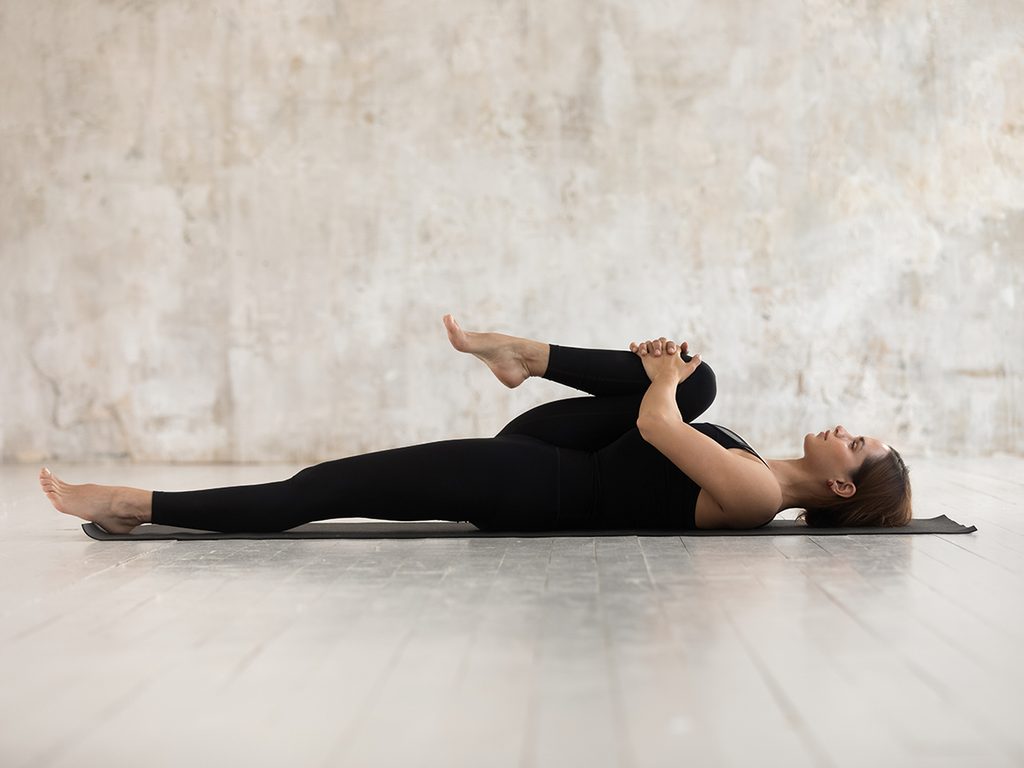4 Expert Tips You Need to Know to Stretch Properly

Here's how to deepen your stretches and improve your flexibility and posture
Stretching is fundamental to living a healthy life. Exercise is usually the focus when we talk about fitness, but stretching is equally important. According to Jennifer Atoapoma, a Montreal-based barre and yoga sculpt teacher, working out shortens your muscles—and shortened muscles promote bad posture and low range of joint motion. Stretching, on the other hand, lengthens your muscles and helps us maintain a healthy range of motion, especially as we age and lose some of the natural flexibility in our joints. “When you stretch, you release tension not only in your muscles, but in your everyday life, too,” she says.
Here are four things to keep in mind while stretching.
1. Stretch everything, but especially your hips
We tend to hold a lot of tension in our hip flexors, a group of muscles that extend from the lower back and pelvis to the inside of our femurs. These muscles allow us to bend at the waist and raise our legs.
Atoapoma suggests “threading the needle” as a way to stretch your hip flexors. Start on your back with your feet on the ground, hip width apart. Then, cross your right ankle over your left thigh to create a figure-four shape with your legs. Lift your left leg to your chest, thread your right hand through the opening of your legs and bring your left hand around and interlace your fingers behind the fold of your left knee. Finally, draw your left knee closer to your chest while see-sawing your right kneecap away from you. Hold for 30 seconds, then switch sides. (Related: Feeling stiff? This yoga move will loosen you up.)
2. Reverse it with some backbends
After sitting at our desks all day, we tend to hunch forward, leading to bad posture and tension in our shoulders. Doing some backbends, which helps the shoulders fall back and opens up the chest area, will help realign your posture and reduce tension by moving your body in the opposite direction.
Lift your arms over your head (make sure you drop your shoulders!) and slowly arch your spine back while reaching your arms back to stretch out your spine and release back tension. Hold for 30 seconds. (Related: 3 Simple Desk Stretches You Should Be Doing While Working From Home)
3. Get uncomfortable, but watch out for pain
You want to feel uncomfortable when you stretch, says Atoapoma, but not in pain. Going to a place where you can feel the muscle stretching (when you feel that good pain) is how you lengthen them.
With time, your body’s muscles will open up and you’ll become more flexible. If you’re no longer feeling a stretch when you do a pose, adjust a little to find the stretch again. To adjust your stretch, try deepening it by dropping lower. Or, you can shift the placement of your body while stretching (for example, planting your tailbone into the ground or mat as you thread the needle is a great way to deepen that stretch). (Related: 9 Ballet Stretches to Do for 10 Minutes a Day to Improve Your Flexibility)
4. Stretch everyday
Even stretching for five or ten minutes every day will go a long way in boosting your joint flexibility, decreasing tension and improving your posture. It’s of the utmost importance especially during quarantine, when we’re a lot less active than normal. If you’re stretching in the morning, Atoapoma suggests dynamic stretches (which are active movements where your joints and muscles go through the full range of motion, like lunges) as a way to set up your muscles to move freely all day. At night, do a static stretch to release the day’s tension.
Though there’s no right or wrong answer when it comes to exactly how long a stretch session should last, Atoapoma says that holding each stretch for at least 30 seconds will help you get the most out of the position. (Related: 6 At-Home Massage Tools Physiotherapists Swear By)
Next, check out the strength-training moves for your best-ever posture.




